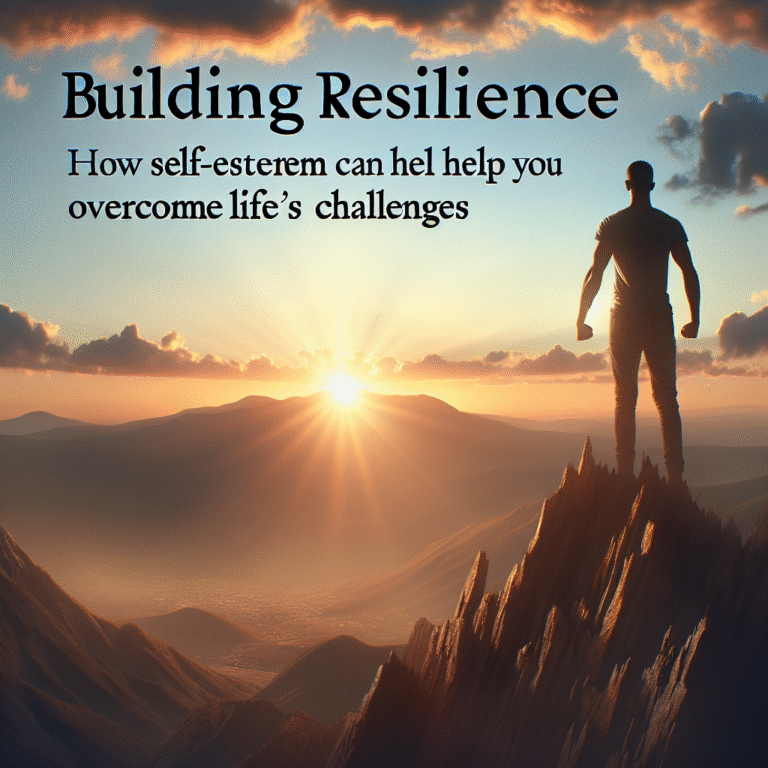
Introduction
In a world overflowing with distractions and expectations, embarking on the journey to self-actualization has never felt more crucial. The concept of self-actualization, eloquently articulated by psychologist Abraham Maslow, represents the ultimate goal in human development—the fulfillment of one’s potential and the realization of personal growth. This journey is not merely an abstract idea; it is a vital pathway towards becoming your best self. Imagine a life where you wake up fulfilled, inspired, and driven to make a difference—not just for yourself, but for the world around you.
In this comprehensive guide, we will explore "The Journey to Self-Actualization: Steps Toward Becoming Your Best Self." Whether you’re at the beginning of this path or looking to deepen your understanding, this article aims to provide valuable insights, compelling case studies, and actionable steps to guide you on your journey.
Understanding Self-Actualization
Self-actualization is often defined as the process of becoming the person you were meant to be. It involves pursuing authenticity, mastering personal potential, and experiencing profound fulfillment. But why is this concept so powerful?
The Hierarchy of Needs
Maslow’s Hierarchy of Needs serves as the foundation for understanding self-actualization. According to Maslow, humans are motivated by a series of needs, usually depicted as a pyramid:
- Physiological Needs: Basic life necessities like food, water, and shelter.
- Safety Needs: Personal security, employment, health.
- Love and Belonging: Friendship, intimacy, family.
- Esteem Needs: Respect, self-esteem, status.
- Self-Actualization: Achieving one’s full potential.
Before self-actualization can be achieved, the lower needs must be met. The journey begins at the base—ensuring basic physical and emotional wellness—before advancing toward self-discovery and personal growth.
Steps Toward Self-Actualization
Step 1: Cultivating Self-Awareness
Self-awareness is the cornerstone of self-actualization. Understanding your thoughts, emotions, and behavior helps you recognize your strengths and weaknesses.
Actionable Tips:
- Journaling: Set aside time each day to journal. Reflect on your experiences and feelings.
- Mindfulness Meditation: Practice mindfulness to enhance your awareness of the present moment.
Case Study: Anna’s Awakening
Anna, an office manager in her late 30s, felt unfulfilled in her job. After attending a workshop on emotional intelligence, she began journaling her thoughts and feelings. This practice not only helped her identify her passion for painting but also led her to take art classes. Anna’s journey of self-discovery exemplifies how cultivating self-awareness can unveil hidden talents and passions.
Step 2: Setting Meaningful Goals
Goal setting transforms dreams into actionable plans. The SMART criteria (Specific, Measurable, Achievable, Relevant, Time-bound) can guide this process.
Actionable Tips:
- Define Your Values: Write down your core values—this will guide your goal-setting process.
- Break Goals Down: Divide larger goals into manageable tasks to avoid feeling overwhelmed.
Case Study: Mark’s Mission
Mark, a recent college graduate, felt lost about his career direction. After defining his core values, he set a specific goal to work in environmental conservation. By breaking his goal into tasks—researching companies, networking, and pursuing internships—Mark found a path that resonated deeply with his values.
Step 3: Embracing Growth Mindset
A growth mindset, as described by psychologist Carol Dweck, is vital for self-actualization. Believing that abilities and intelligence can be developed encourages resilience and adaptability.
Actionable Tips:
- Reframe Challenges: View challenges as opportunities for growth rather than obstacles.
- Celebrate Small Wins: Acknowledge and celebrate progress, no matter how small.
Case Study: Lisa’s Leap
When Lisa faced setbacks in her professional journey, she initially felt defeated. However, by adopting a growth mindset, she began to view each challenge as a learning experience. This shift not only improved her performance at work but also boosted her confidence, allowing her to pursue a management role.
Step 4: Building Healthy Relationships
The journey to self-actualization flourishes in a nurturing environment. Surrounding yourself with supportive individuals can significantly influence your personal growth.
Actionable Tips:
- Cultivate Your Tribe: Identify people who inspire and uplift you. Invest time in these relationships.
- Practice Active Listening: Genuine communication fosters deeper connections.
Case Study: Tom’s Transformation
Tom, who often felt isolated due to his introverted nature, decided to join a local book club. The experience not only expanded his social circle but also encouraged him to discuss his thoughts and perspectives more openly, leading to significant personal growth.
Step 5: Continuous Learning
Self-actualization is an ongoing process. Committing to lifelong learning keeps your mind open and your spirit engaged.
Actionable Tips:
- Enroll in Courses: Consider online courses or workshops that pique your interest.
- Read Widely: Reading diverse materials can broaden your perspectives and foster innovation.
Case Study: Sarah’s Success
Sarah, a mid-level manager, felt stagnant in her career. By taking a series of professional development courses, she gained new skills in leadership and strategic thinking, which eventually led to a promotion.
The Role of Resilience
Resilience is critical on the journey to self-actualization. The ability to bounce back from failures or setbacks is what propels us forward.
Building Resilience
- Maintain Perspective: Understand that setbacks are a part of the growth process.
- Develop Coping Strategies: Identify techniques that help you manage stress effectively.
Case Study: Michael’s Recovery
Michael, a small business owner, faced significant losses during a financial downturn. Instead of giving up, he focused on his resilience, sought advice, and pivoted his business strategy, ultimately emerging stronger than before.
Conclusion
The journey to self-actualization is unique for each individual, but it encompasses universal steps that facilitate growth. By cultivating self-awareness, setting meaningful goals, embracing a growth mindset, building healthy relationships, and committing to continuous learning, you can take significant strides toward becoming your best self.
This journey is about more than personal fulfillment; it’s about fostering a deeper connection with the world around you. As you proceed on this path, remember that every small step counts. Your journey toward self-actualization is not a sprint but a beautiful expedition filled with growth and discovery.
FAQs
What is self-actualization?
Self-actualization is the realization of one’s full potential, harnessing personal capabilities, and finding meaning in life.How can I start my journey to self-actualization?
Begin with self-awareness practices such as journaling and mindfulness, then set personal goals aligned with your values.Is self-actualization a one-time achievement?
No, self-actualization is an ongoing process of growth and adaptation throughout life.What role do relationships play in self-actualization?
Supportive relationships provide encouragement and feedback, fostering an environment conducive to personal growth.- Can self-actualization lead to professional success?
Yes, many individuals find that achieving personal growth translates into increased confidence and success in their careers.
The journey to self-actualization is continuous, rewarding, and profoundly transformative. Let it unfold as you take steps toward becoming your best self, shaping not only your own life but also positively impacting those around you.











